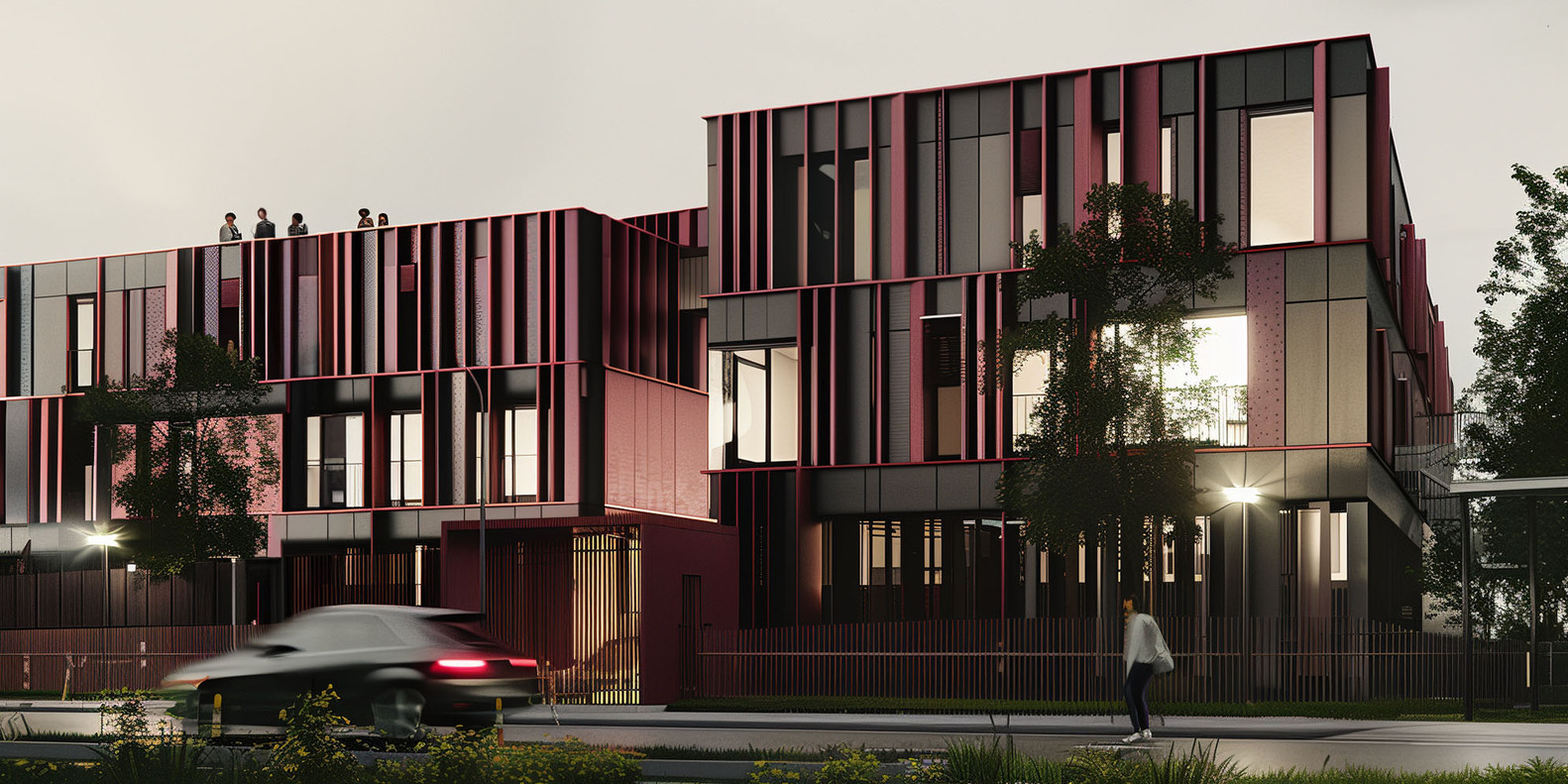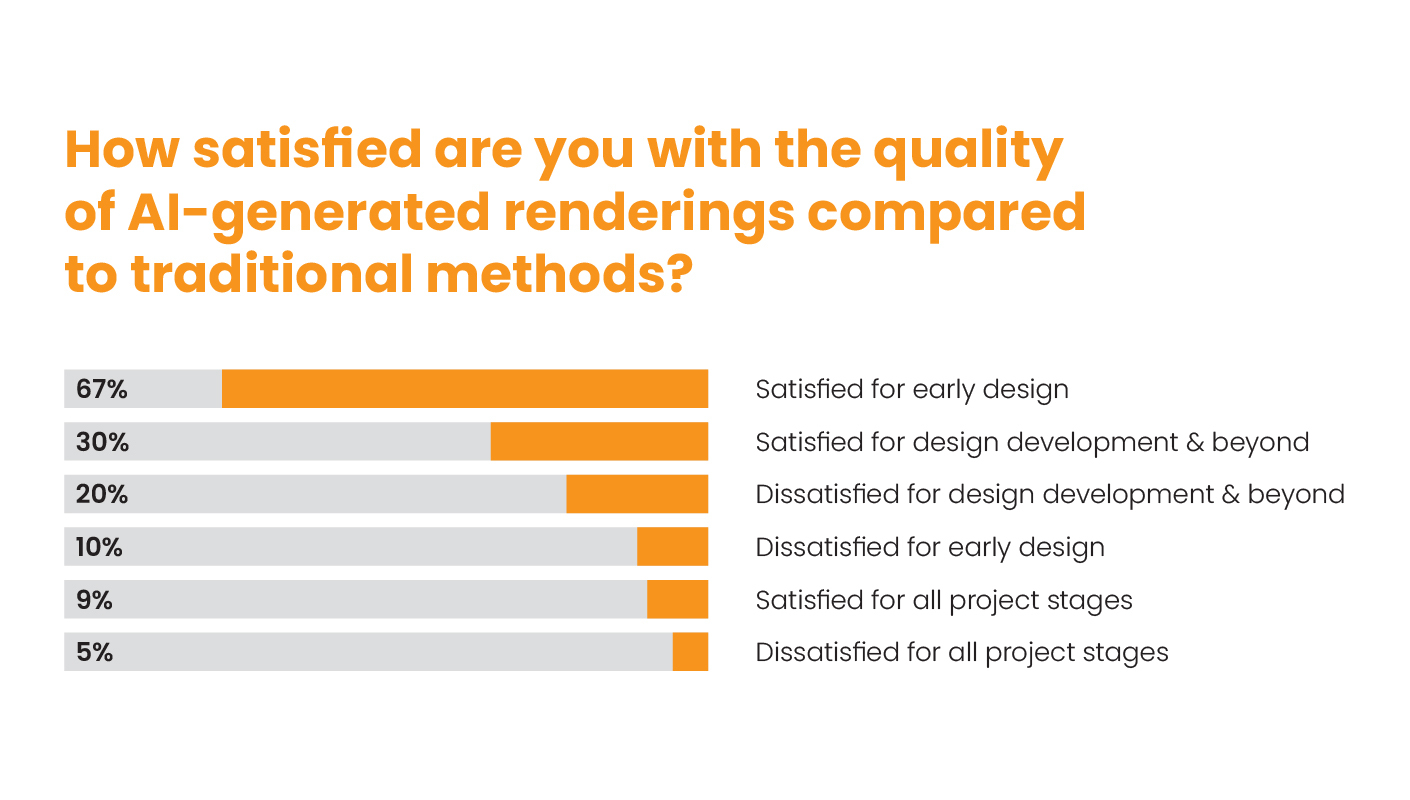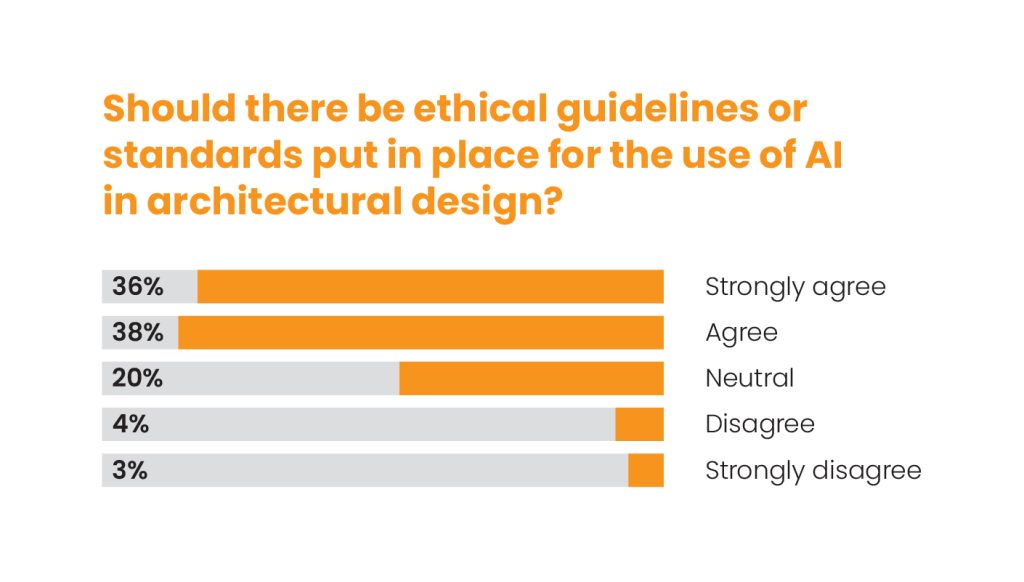
Whether it’s excitement or caution, there’s no escaping the buzz of AI in architecture. AI offers architects and designers the power to innovate, streamline, and create built environments that are both functional and visually appealing.
However, such a revolutionary technology naturally raises concerns. Issues like the potential loss of creativity, job displacement, and ethical dilemmas are prominent worries regarding the adoption of AI in architecture.
To understand the industry’s perspective on AI, over 1,200 architectural professionals were surveyed about how they are using it in their daily practice. We explored how AI influences design processes and workflows and what professionals think its impact means for the future of the field.
The majority of participants work in firms with 20 or fewer employees and are mostly located in the United States. Firms offering architectural design were the most represented, with 77% of respondents. Other areas, such as interior design, urban planning, landscape, and engineering, were also included.
The use of AI is being propelled by experimentation and self-driven learning. Like many breakthrough technologies, the availability of sufficient learning resources and formal training hasn’t entirely kept up with its rapid adoption. Consequently, users are forced to experiment and learn the tools independently.
The survey revealed that self-directed learning is the most popular way architects and designers are implementing AI technology. More than 60% of respondents are using AI without formal training.
Integration issues, lack of testing time, and insufficient training resources are challenges faced in adopting AI tools for architectural projects. However, more than two-thirds of respondents already use AI or intend to do so soon.

The Highest Satisfaction With AI Is When It’s Used During the Early Design Stages
The architects and designers were surveyed about the quality of AI-generated renderings compared to traditional methods. Over 67% of respondents expressed satisfaction with the quality of AI-generated renderings, particularly in the early design stages.
High-quality renderings play a crucial role throughout the architectural workflow, especially in the initial design phases. This stage involves extensive idea exploration and collaboration with clients, making clear renderings essential for conveying design intent effectively.
It was noted that AI is primarily used and beneficial for image generation from text prompts and image editing. However, when asked about the suitability of AI renderings for other stages of the design process, participants expressed concerns about precision and control. Only about 30% considered AI renderings suitable for design development and beyond.

AI Technology Will Soon Become Standard in Architectural Design but Needs to Evolve
As the technology’s popularity continues to grow, architects and designers anticipate its increasingly significant role in architectural design. However, before it becomes commonplace, there’s a consensus that it must continue evolving to address existing challenges and meet professional standards.
Fifty-two percent expressed concerns about AI’s potential to disrupt job security within the architectural visualization field, while 74% agreed that ethical guidelines should govern AI’s use. To ensure that AI’s integration in architecture enhances the profession rather than diminishes it, standardized industry guidelines are necessary. These guidelines should address factors such as intellectual property, quality assurance, and transparency in AI applications.

Overall, there is optimism regarding AI’s potential in architecture. Its transformative capabilities and the challenges it poses are acknowledged, sparking ongoing discussions on how to navigate its integration. The mixture of enthusiasm and caution suggests that while the architecture community is eager to adopt the technology, achieving a balanced approach is crucial for its successful implementation in architectural practice.

